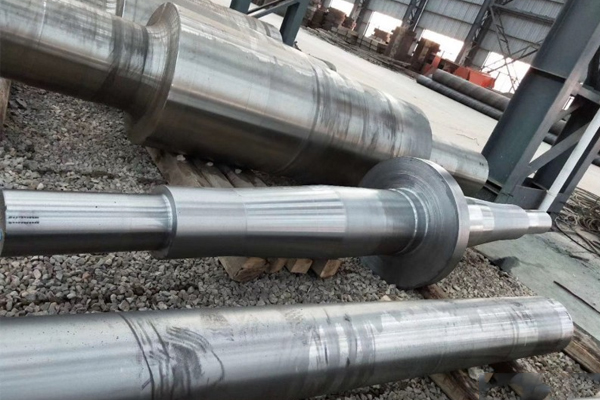Is there a requirement for hardness of shaft forgings?
Surface hardness and uniformity of shaft forgings are the main items of technical requirements and routine inspection. The hardness of the body shows the wear resistance, etc., in production, the resilience shore D hardness value HSd is used to express.
The hardness requirements of shaft forgings are mainly based on the hardness level of the working roller or the middle roller in contact with it, and the two should keep a proper matching relationship. According to the research on contact fatigue mechanism, the hardness of the support roller should be 10-25 HS units lower than that of the contact part, which is beneficial to improve the fatigue phenomenon in the contact area. Hard shaft forgings have low wear resistance and are prone to "peeling" phenomenon, that is, the shallow layer of the roll surface produces plastic deformation and then produces small surface peeling; When hardness is too high, the chance of brittle spalling increases. As the fracture toughness value of hardened layer is low, once the crack appears, it will spread rapidly, resulting in serious bulk spalling. High hardness can also cause contact fatigue damage and fast wear of shaft forgings and shorten the grinding period of shaft forgings.
In recent years, the hardness of shaft forgings of cold and hot rolling mill has been generally improved, especially the work rolls of hot rolling mill have been developed and promoted successively, the hardness level of centrifugal composite high chromium cast iron rolls, centrifugal composite high chromium steel rolls and high alloy unrestricted cold cast iron rolls. The hardness level of shaft forgings has reached 70-83. The current shaft forgings materials and manufacturing technology can meet the hardness of 55-75 large high-quality shaft forgings. At the same time, the use of high hardness shaft forging maintenance technology has also accumulated a lot of experience.
The super large shaft forgings of the plate mill are large in size and heavy in weight, and the rolling speed is much smaller than that of the strip mill. Therefore, wear resistance and hardness requirements are also lower.
